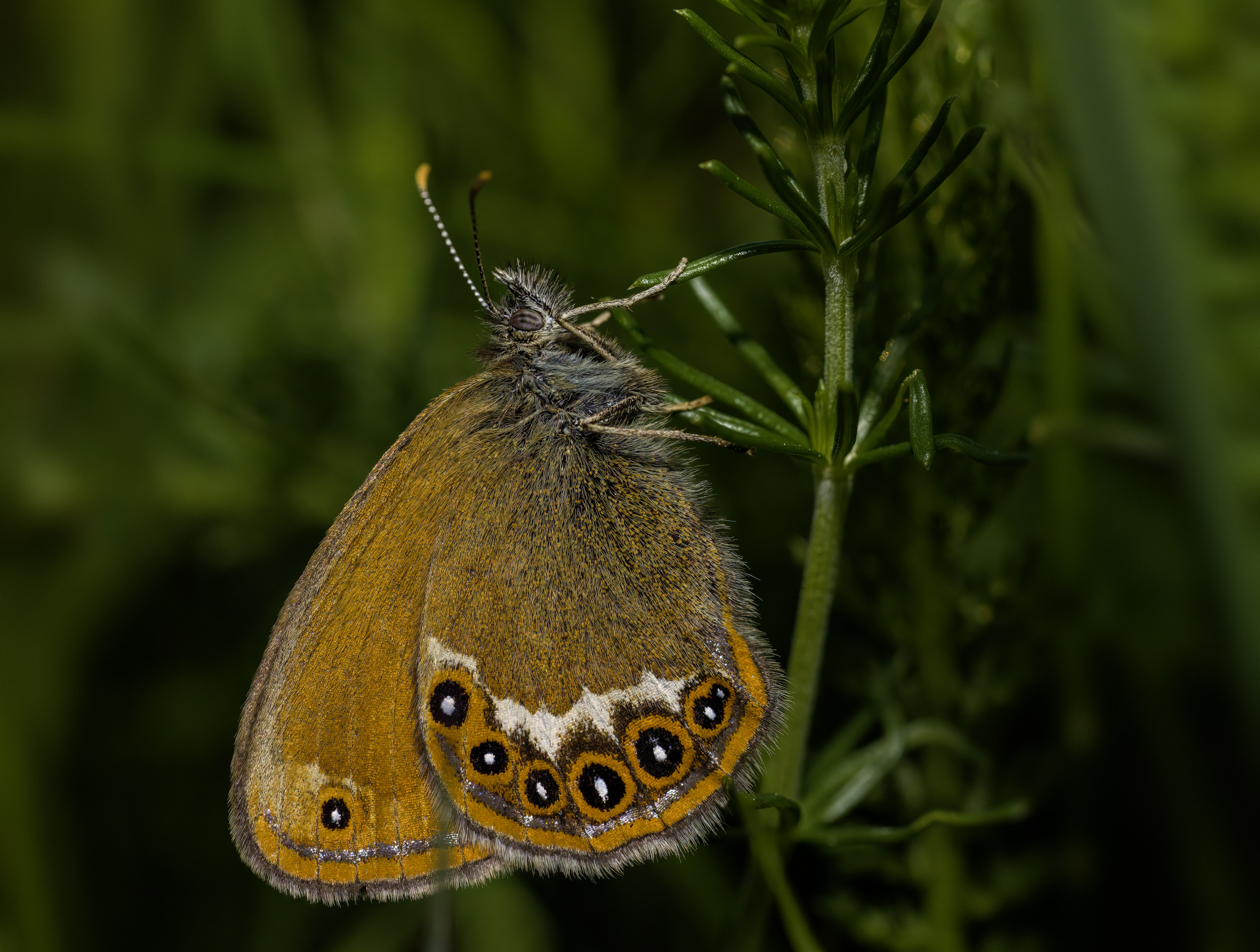The Pearly Heath (Coenonympha arcania) is a small and attractive butterfly species found in various parts of Europe and Asia. Here is a detailed overview of this species:
Appearance
- Wingspan:
- Typically ranges from 28 to 32 millimeters.
- Coloration:
- Upper side: The forewings are a warm brownish-orange with a distinct black eyespot near the tip. The hindwings are brown with a subtle pearly sheen, especially noticeable in fresh specimens.
- Under side: The forewings are pale orange with white banding and a single eyespot. The hindwings are greyish with white banding and small eyespots, contributing to a camouflaged appearance.
- Body: Slim and covered in fine scales that add to the pearly effect.
Habitat
- Preferred Habitats:
- Found in a variety of habitats including forest edges, clearings, meadows, and grasslands. They prefer areas with a mixture of grass and scattered shrubs.
- Geographic Range:
- Distributed across much of Europe and into parts of Asia, with a range that extends from Spain and France in the west to the Ural Mountains in the east.
Behavior
- Feeding:
- Adults: Feed on nectar from various flowering plants, particularly favoring species such as thistles, knapweeds, and other composites.
- Larvae: Feed on grasses, with a preference for species such as sheep’s fescue (Festuca ovina) and other fine-leaved grasses.
- Flight Period:
- Typically observed from May to August, with one generation per year.
- Activity:
- Diurnal and very active during sunny days. They are often seen fluttering close to the ground and perching on grasses and flowers.
Life Cycle
- Eggs:
- Laid singly on grass blades.
- Larvae:
- Green with white stripes, well-camouflaged among the grass. They undergo several molts as they grow.
- Pupae:
- Chrysalis is green or brown, attached to grass stems.
- Adults:
- Emerge from the chrysalis in late spring to early summer.
Identification Tips
- Distinctive Pearly Sheen: The subtle pearly sheen on the underside of the hindwings is a key identifying feature.
- Single Eyespot: The forewings have a characteristic single black eyespot near the tip on both the upper and underside.
- White Banding: The presence of white bands on the underside of the wings can help distinguish it from similar species.
Ecological Role
- Pollination: As nectar feeders, they play a role in the pollination of various plants.
- Food Source: Serve as prey for birds, small mammals, and other predators.
Conservation Status
- Population: Generally stable across its range, but local declines can occur due to habitat loss.
- Threats: Habitat destruction, intensive agriculture, and pesticide use are the primary threats.
Conservation Efforts
- Habitat Preservation: Maintaining and protecting meadows, grasslands, and forest edges is crucial for their survival.
- Reduced Pesticide Use: Promoting environmentally friendly farming and gardening practices helps protect this and other butterfly species.
Human Interaction
- Observation: A favored species among butterfly enthusiasts and photographers due to its attractive appearance and relative abundance in suitable habitats.
- Education: Used in educational programs to highlight the importance of biodiversity and habitat conservation.
Summary
The Pearly Heath (Coenonympha arcania) is a small but striking butterfly with a characteristic pearly sheen on its hindwings and distinct white banding. Found across Europe and parts of Asia, this species thrives in diverse habitats such as forest edges and meadows. Its role in pollination and as part of the food web underscores its ecological importance. Conservation efforts focused on habitat preservation and reduced pesticide use are essential to ensure the continued survival of this beautiful butterfly.
Visited 820 times, 1 visit(s) today
Views: 1266
Subscribe to the newsletter:
